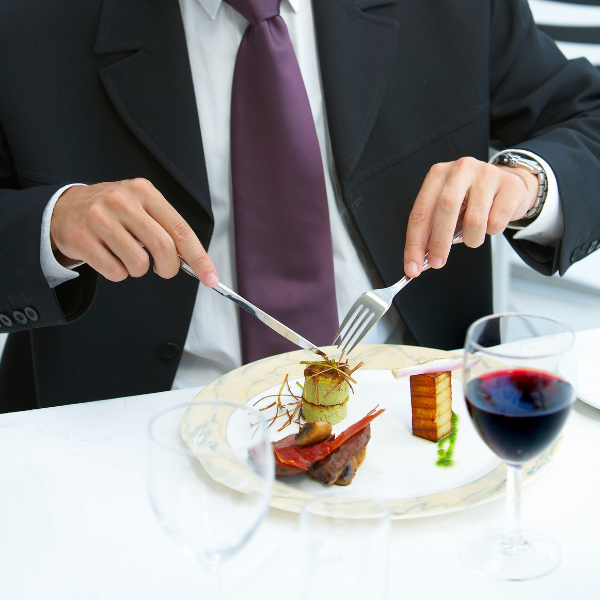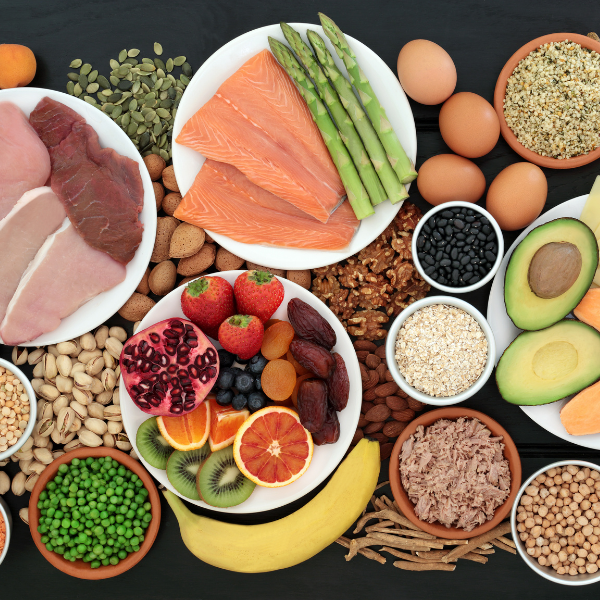There has always been a lot of controversy as to whether plastic or wooden cutting boards are better. For most of history, cutting boards have been made out of wood but since wood is porous and can absorb bacteria, many switched to plastic boards for food preparation because they are easier to sanitize. However, cutting on a plastic board can result in grooves that harbor bacteria. Because there is no clear answer as to whether one is better than the other, read our cutting board buying guide to help you determine which cutting board works best for your kitchen.
Which Cutting Board Is More Sanitary?
There is not one type of cutting board that is more sanitary than the rest. Many studies have been conducted to see which type of cutting board is more sanitary but all have garnered different results. As long as you use different cutting boards for different types of food and practice proper washing and drying techniques, you’ll be able to avoid cross-contamination and keep surfaces sanitary.
Which Cutting Board Is Best For Meat?
In general, plastic cutting boards are better for meat because they are non-porous and can endure the hot temperatures of a dishwasher, making them easier to sanitize. Some plastic cutting boards will even have antibacterial surfaces and grooves to prevent bacterial growth in the grooves and for collecting juices. These extra features in a plastic cutting board can greatly help in keeping your food and equipment safe from bacteria.
What Cutting Boards Do Chefs Use?
Chefs have the freedom of picking any type of cutting board they prefer as long as they follow the FDA guidelines on food safety and sanitation. However, when looking for a cutting board, chefs prefer cutting boards that are easy to clean, long-lasting, and won’t damage their knives. They also have the option of choosing a cutting board that has been certified by the National Science Foundation (NSF). These types of cutting boards are certified based on their safety standards, quality, nontoxicity, and must comply with FDA guidelines and requirements.
Cutting Board Materials
Plastic
As previously mentioned, plastic cutting boards are easier to sanitize and most are dishwasher-safe. This is why plastic cutting boards are recommended for use with meat. The high temperature of dishwashers can be endured by plastic and eliminates the bacteria from the grooves. You should also take into consideration that there are different types of plastic cutting boards out there that have been designed to make prepping a little easier such as non-slip cutting boards, flexible cutting boards, and bar cutting boards.
Non-Slip Cutting Boards
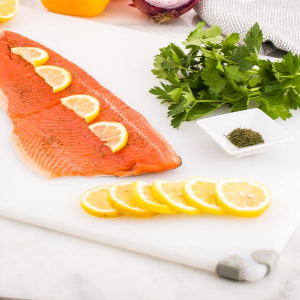
These types of cutting boards have non-slip grips on the corners that stay securely in place while carving meat. Handling beef and chicken can sometimes require force and might cause your cutting board to slide around your work station as a result. This sliding can lead to employees accidentally cutting or harming themselves. Look for non-slip cutting boards that have the following features:
- Non-slip grips: keep the board in place to prevent accidents
- Measurement markers: help with portion control while prepping
- Carrying handles: provide easy transport of ingredients
- Dishwasher-safe: to effectively eliminate germs
Flexible Cutting Boards
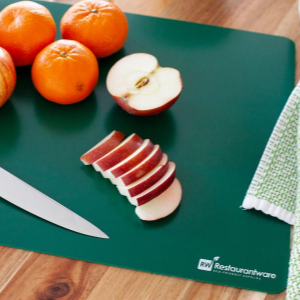
Usually sold in sets, flexible cutting boards are bendable to easily transfer ingredients into your bowls and prevent food waste. Each individual board in a set can serve a different purpose such as for cutting meat, fruit, vegetables, or cheese. A reliable cutting board set will usually have:
-
Color-coded boards: each color serves a specific purpose to prevent food
cross-contamination
- Green is for fruits and vegetables
- White is for dairy and bread
- Red is for raw meat
- Purple is for allergen-free food products
- Flexible design: allows food to easily slide into bowls and eliminate waste
- Dishwasher-safe: to effectively eliminate germs
Bar Cutting Boards
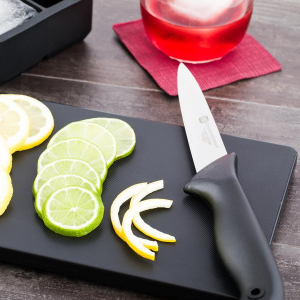
If you’re running a bar in your restaurant, you should have a separate plastic cutting board for prepping acidic fruits such as lemons, herbs, and garnishes. These cutting boards are smaller than your average cutting boards because they are typically used for small foods and can easily fit on your bar’s countertop. Bar cutting boards should have features such as:
- Non-slip grips: keep the board in place to prevent accidents
- Small size: to fit on bar countertops and comfortably prep ingredients
- Dishwasher-safe: to effectively eliminate germs
Wood Cutting Boards
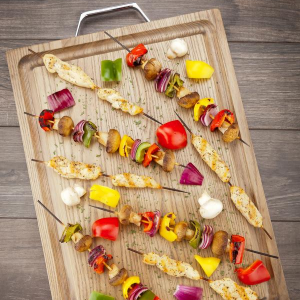
While plastic cutting boards are a better choice for cutting meat, wood cutting boards are the ideal option for fruits, vegetables, bread, and cheese. While fruits and vegetables also contain germs, the pores in wooden cutting boards are deeper than the crevices in plastic cutting boards, making it almost impossible to sanitize. This is why you should always immediately wash cutting boards after each use. The best wooden cutting boards for commercial kitchens should include these features:
- Carrying handles: provide easy transport of ingredients
- Engraved perimeter: catches juices, drippings, and sauces from prepped ingredients
Cutting Board Sizes
Small
If you’ve got a workstation that has a limited amount of space, a small cutting board is a solution to preparing food more comfortably. These are great for cutting fruits or chopping vegetables so that you won’t have to clean a large board for small jobs.
Small Cutting Board Sizes:
- 5” x 7”
- 6” x 9”
- 8” x 11”
Medium
Medium-sized cutting boards are the most versatile of all the cutting boards because they can be used for practically any type of meal prep. Their versatility is great for everyday use and they will quickly become your go-to board.
Medium Cutting Board Sizes:
- 9” x 12”
- 10” x 14”
- 12” x 18”
Large
A large cutting board has ample size for cutting a sizeable amount of food and is more suitable for cutting large foods such as cabbages, turkey breasts, or watermelons. It also gives you enough room to safely chop and reduce the chances of accidental cuts.
Large Cutting Board Sizes:
- 12” x 17”
- 14” x 18”
- 16” x 24”
Extra Large
These cutting boards are great for handling big jobs but also for using as serving trays. Their extra-large size can make a statement in the middle of your tables and they’re also great for charcuterie presentations.
Extra Large Cutting Board Sizes:
- 14” x 20”
- 12” x 36”
- 32” x 24”
Always Be Prepared
Every restaurant should have at least two cutting boards in their kitchen. One for fruits and vegetables and the other for meat. But as clean as you might keep your cutting boards, always remember to replace them once they are visibly worn down. This will reduce the chances of cross-contamination and keep your establishment free of bacteria growth. When selecting a cutting board, remember to reference this guide in order to pick a board with features that will best benefit your establishment.




